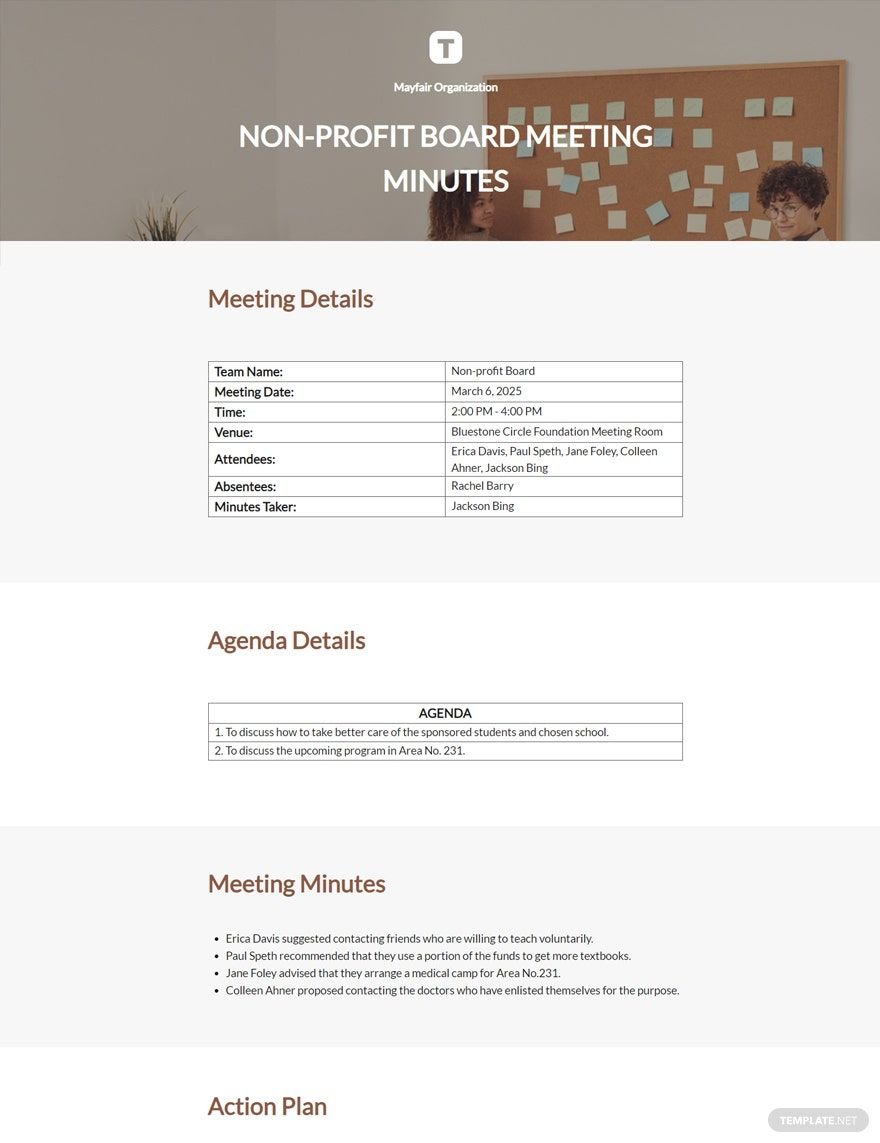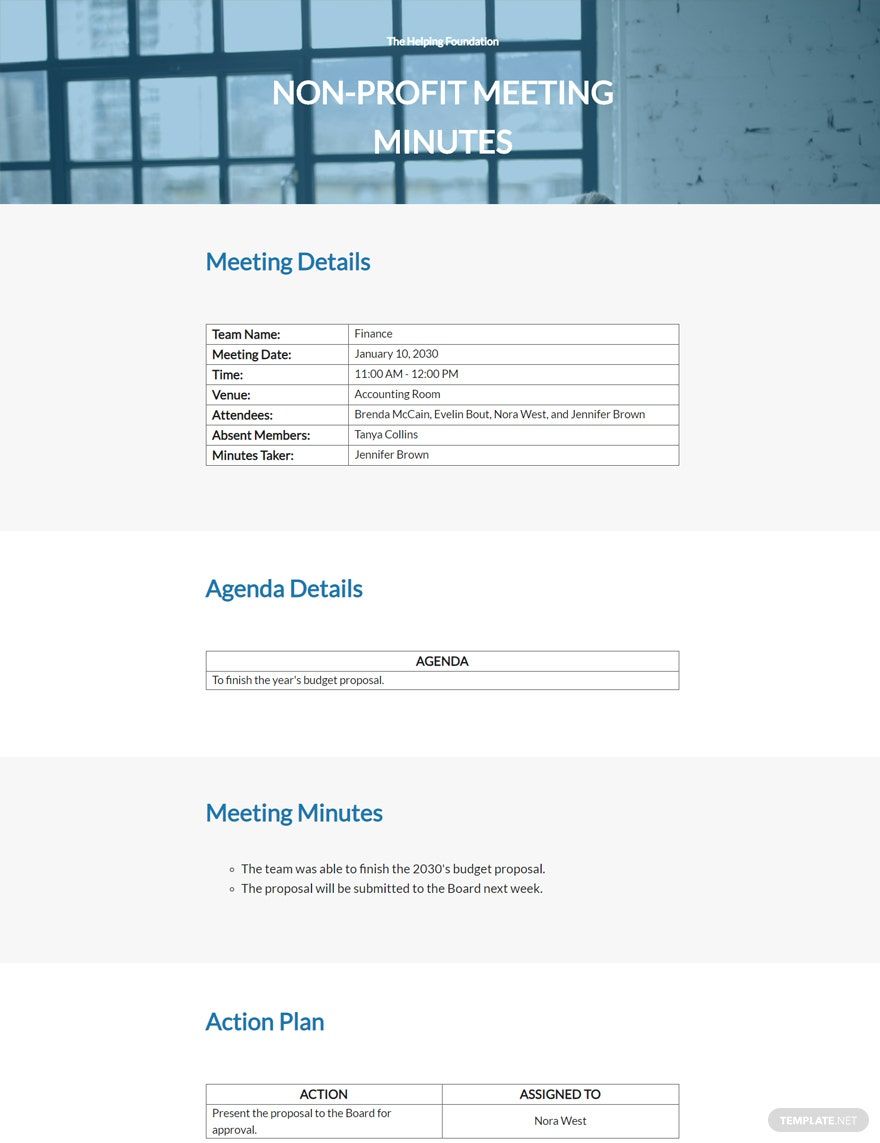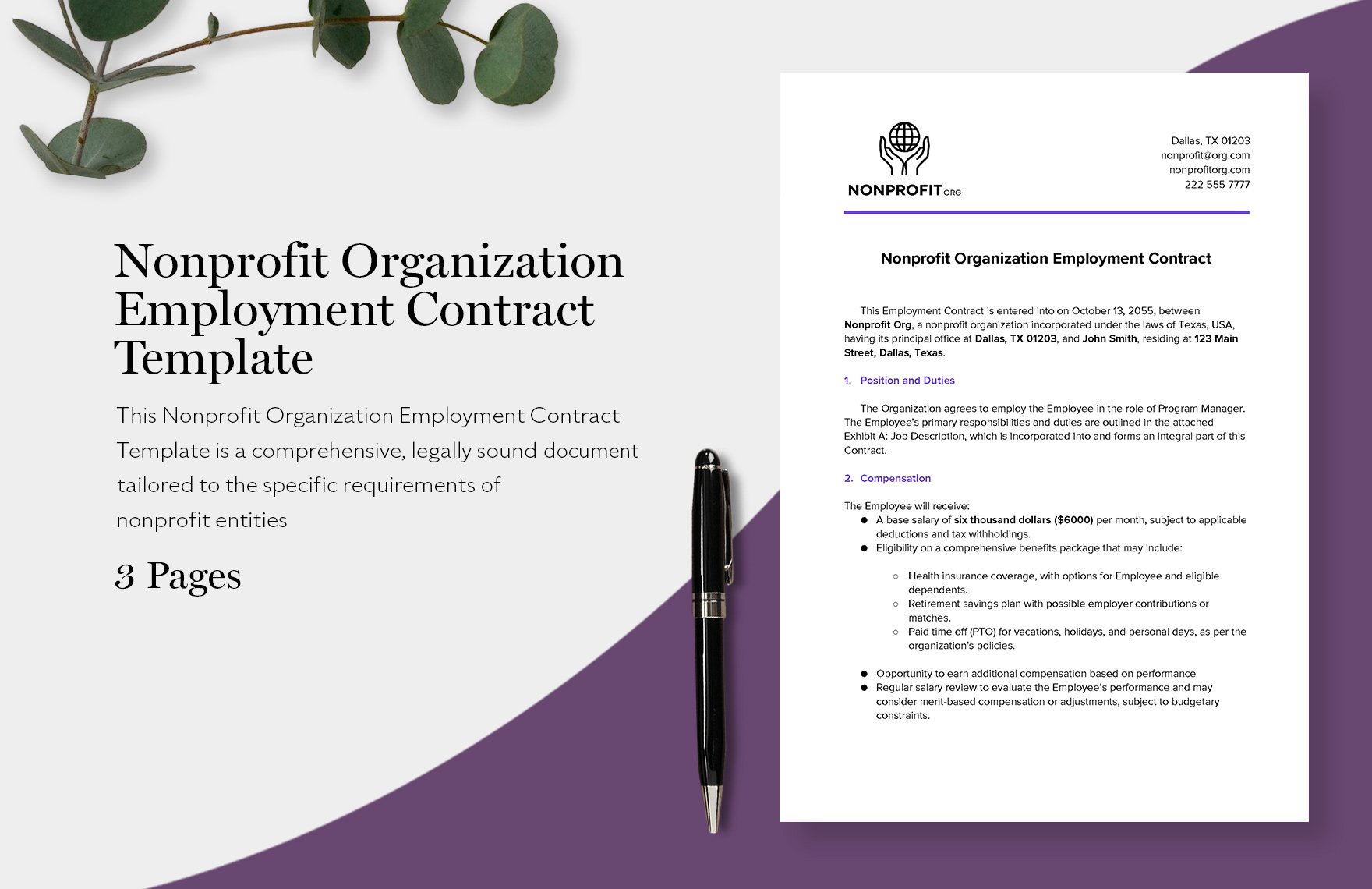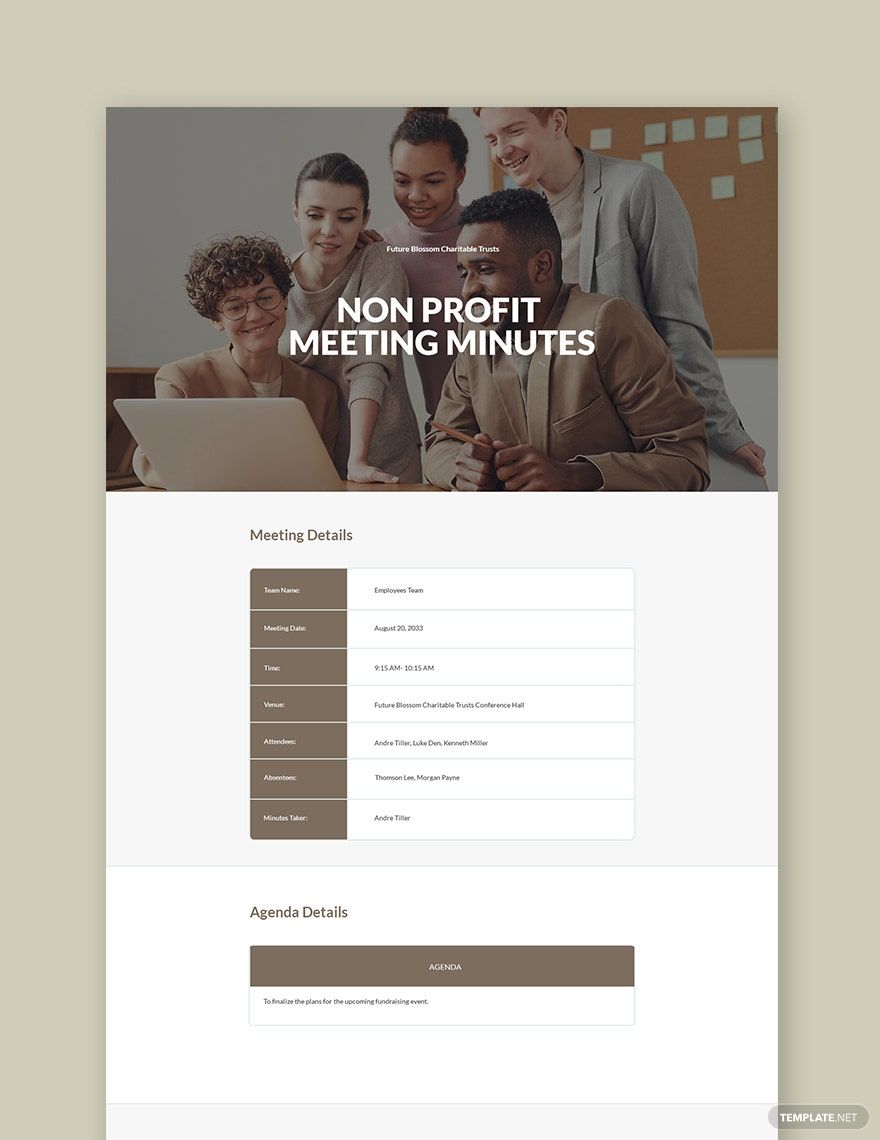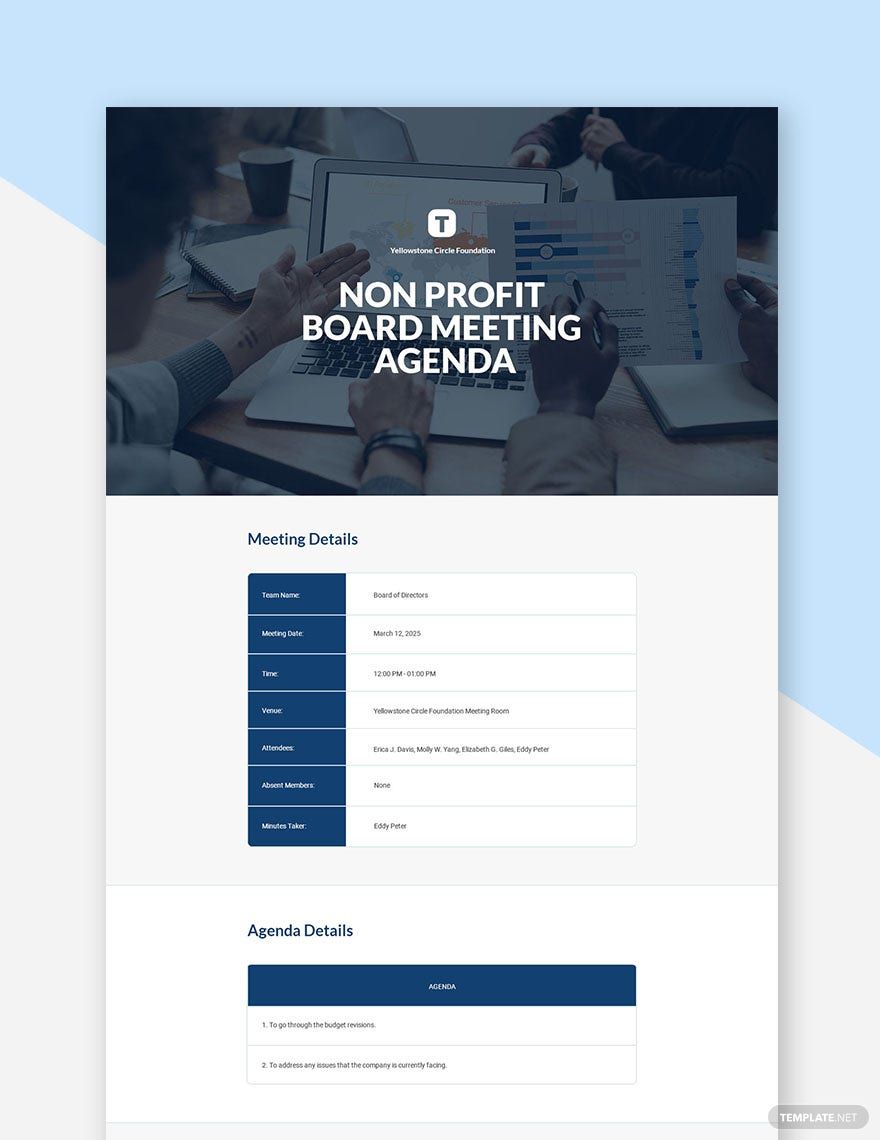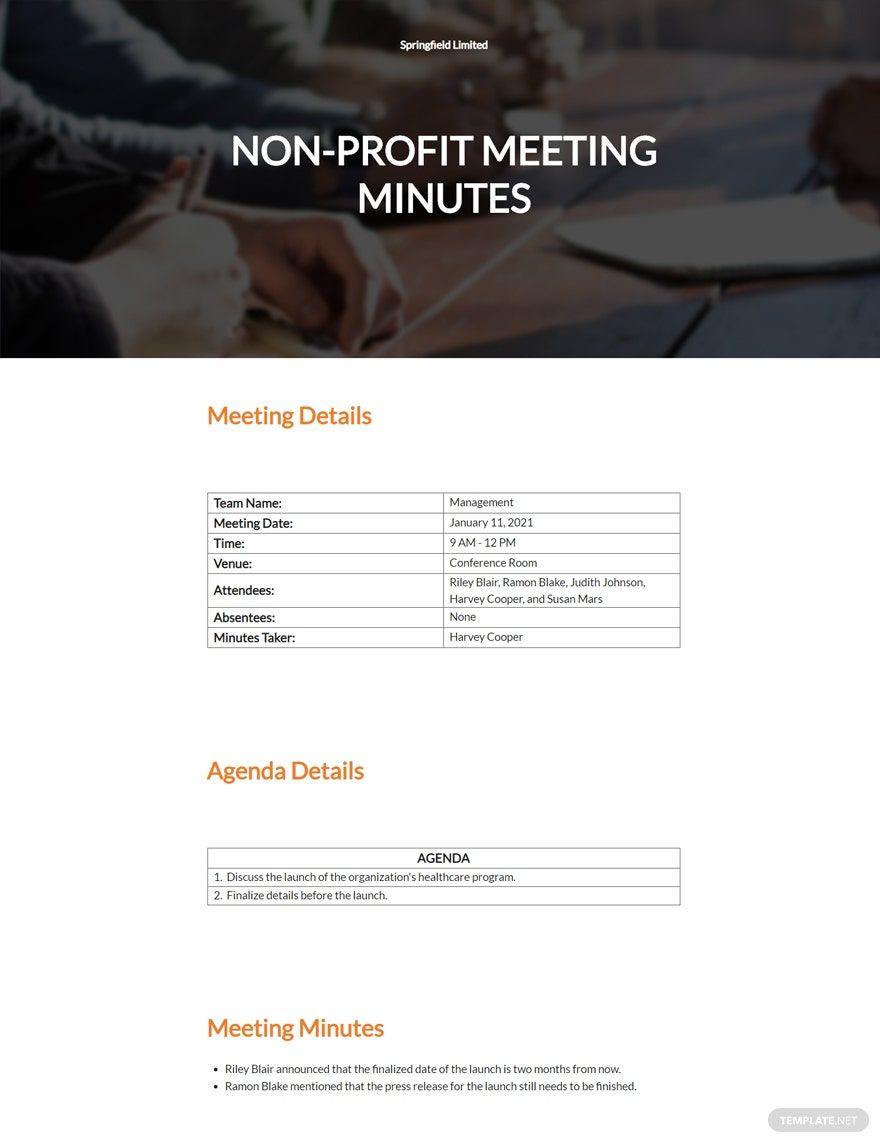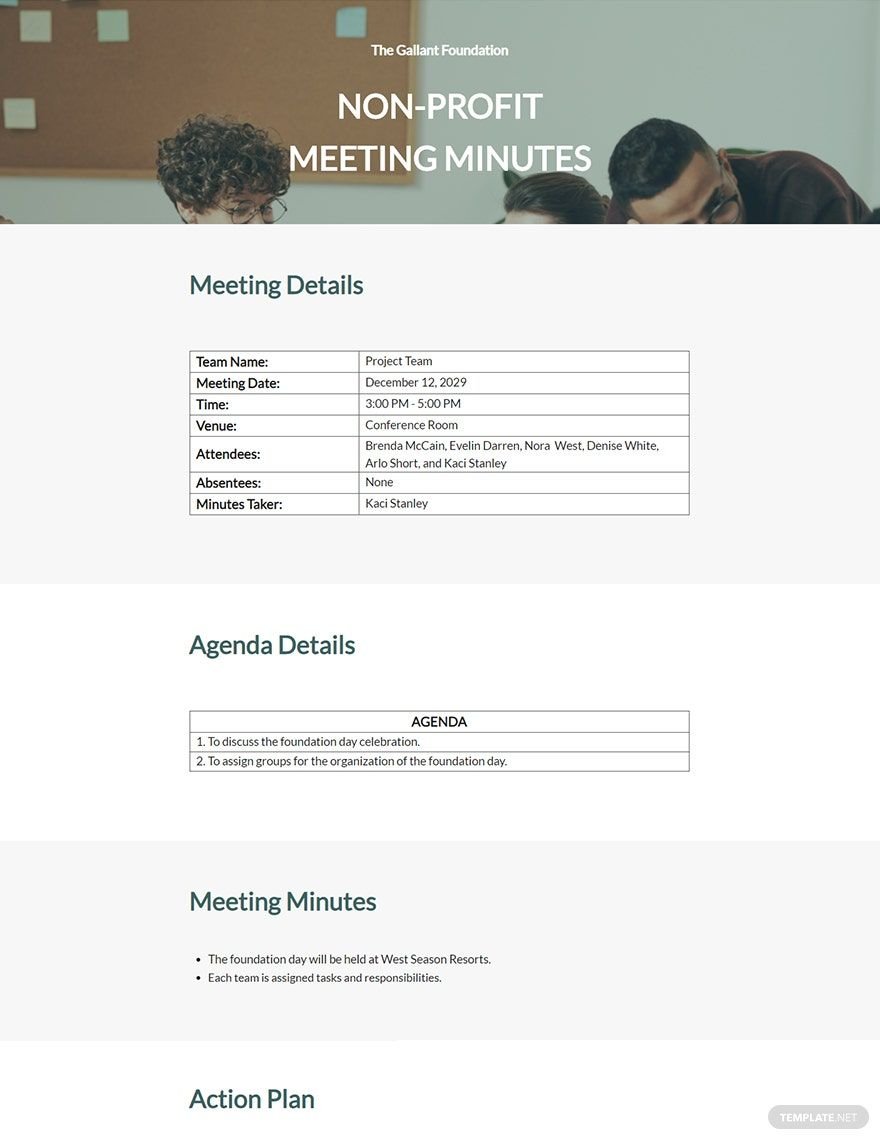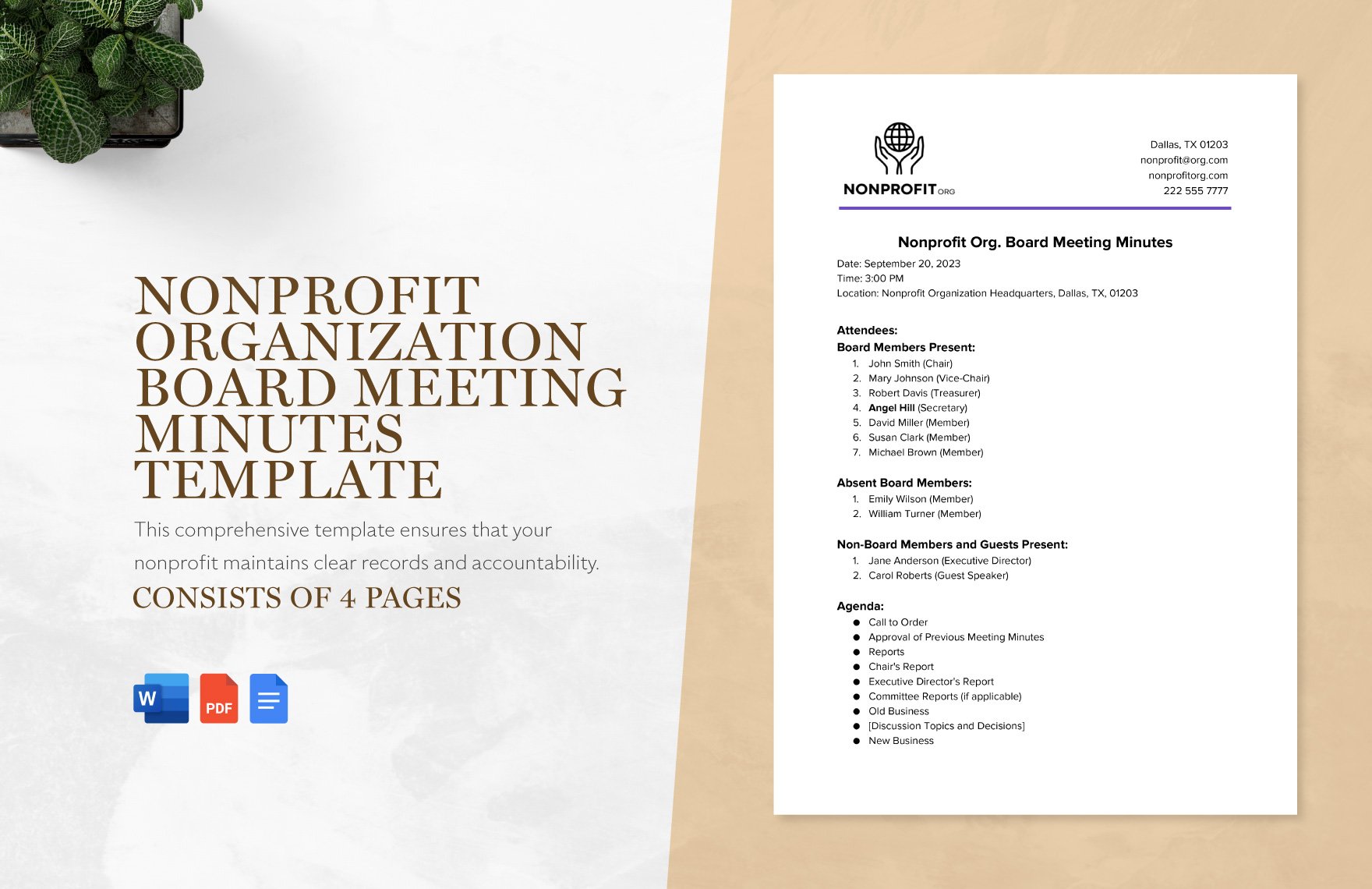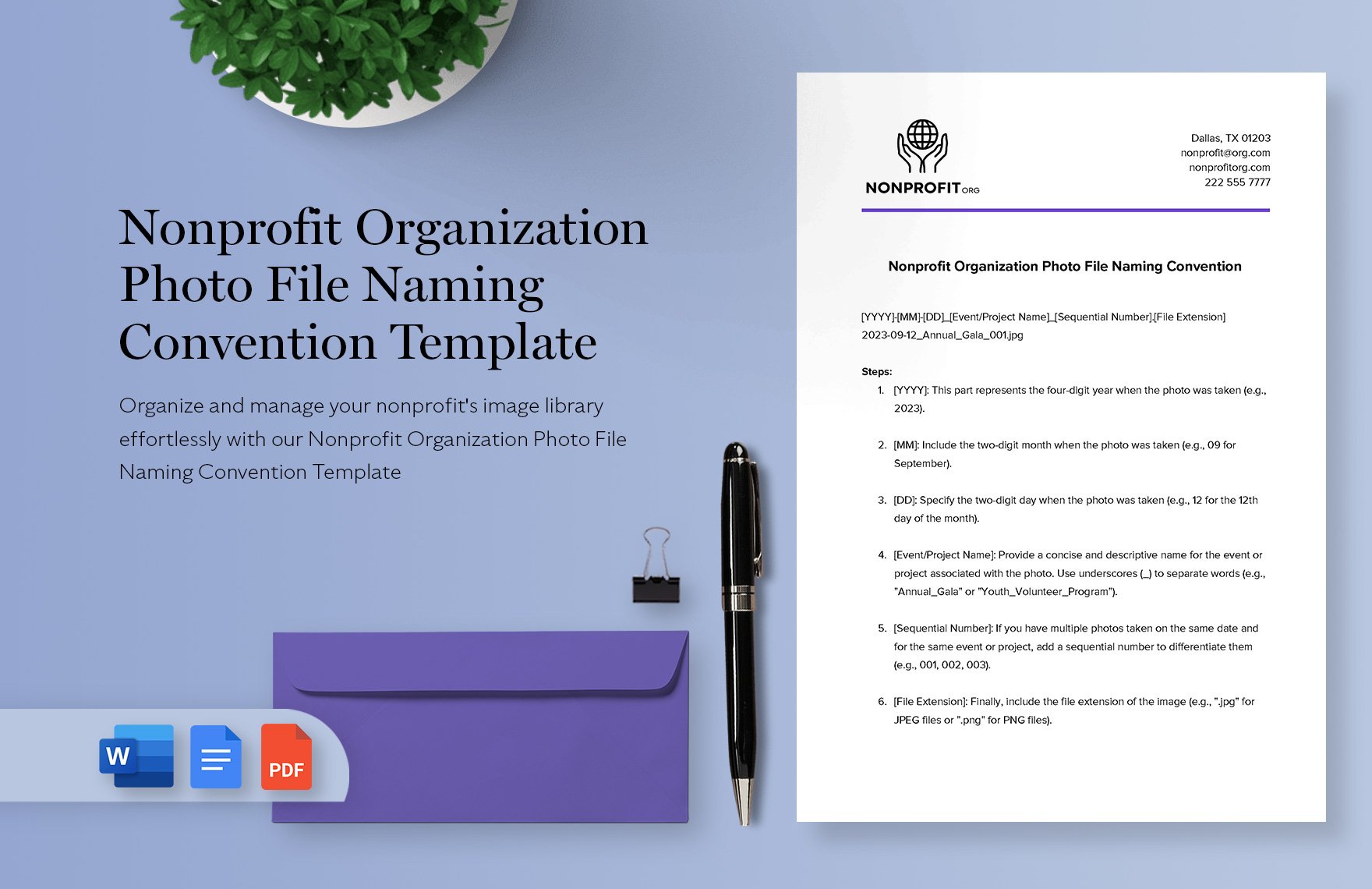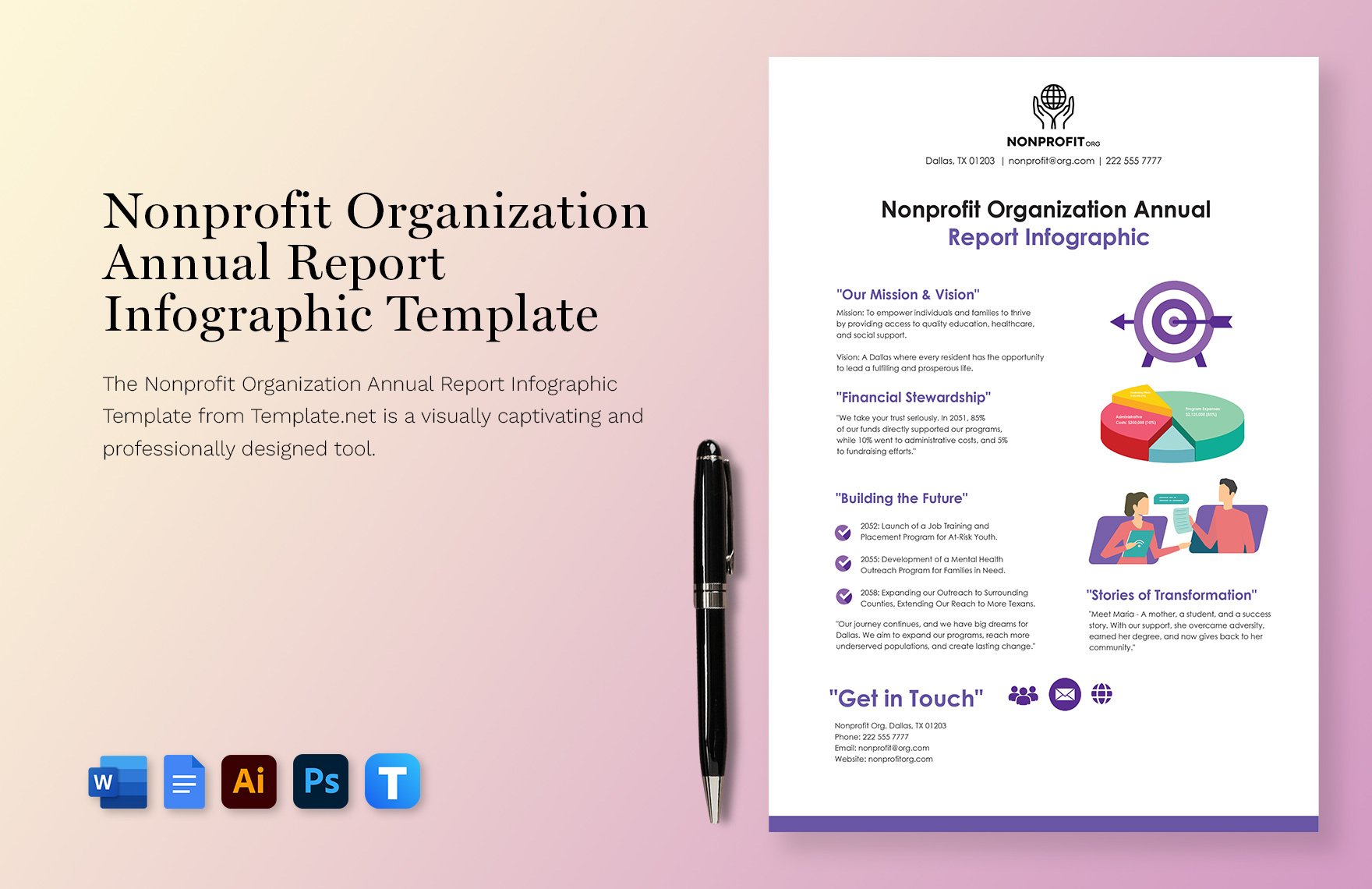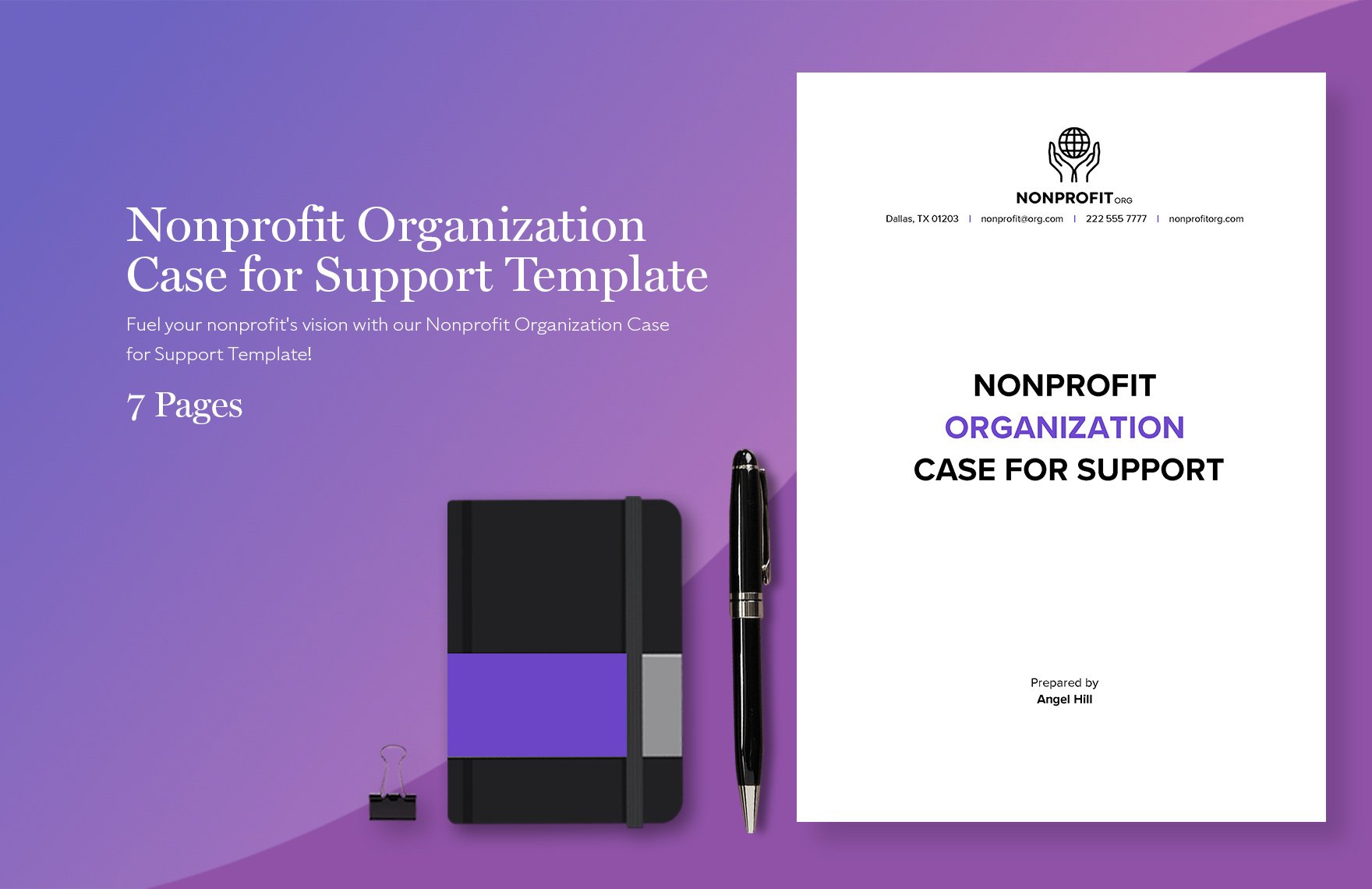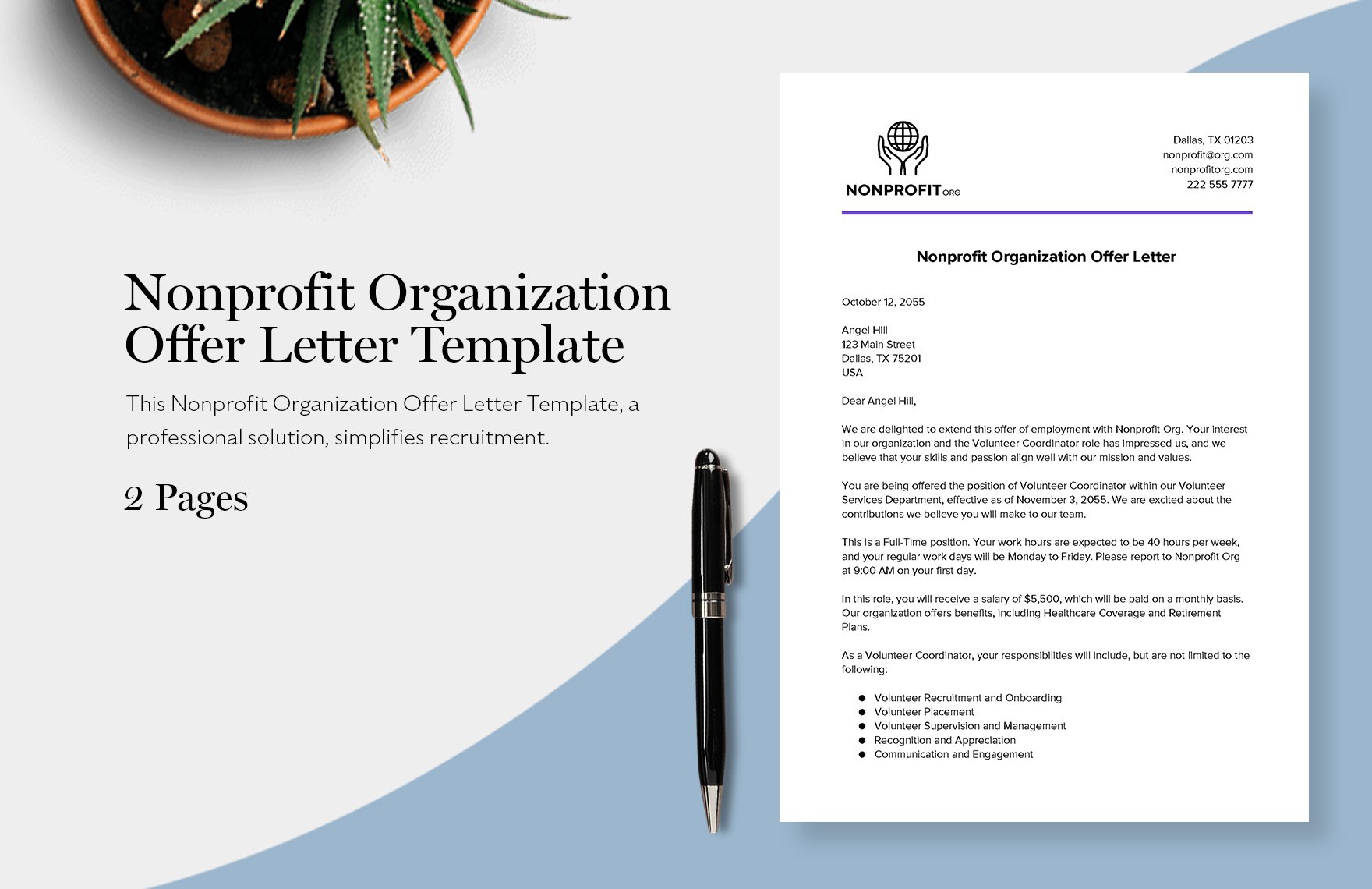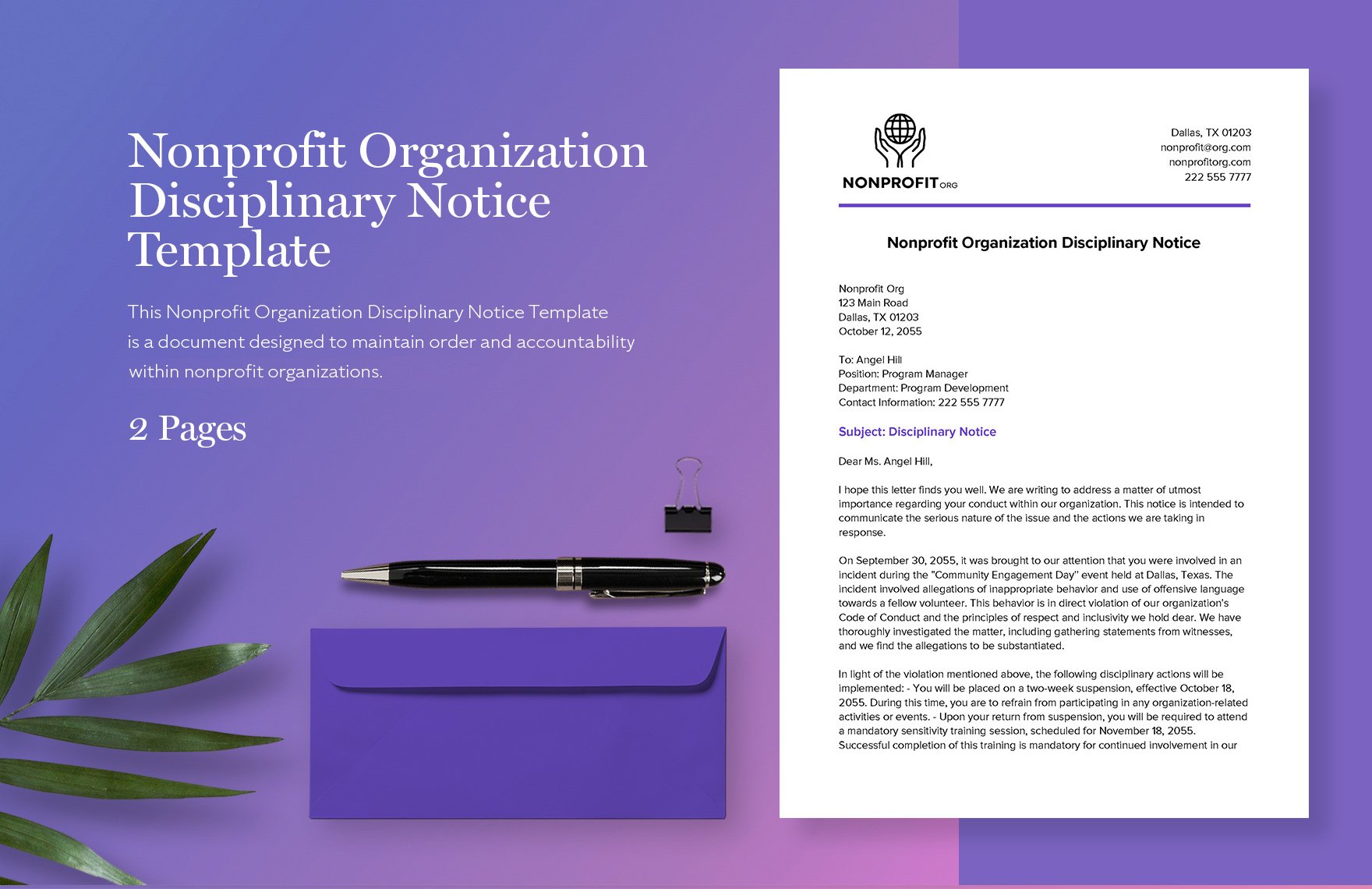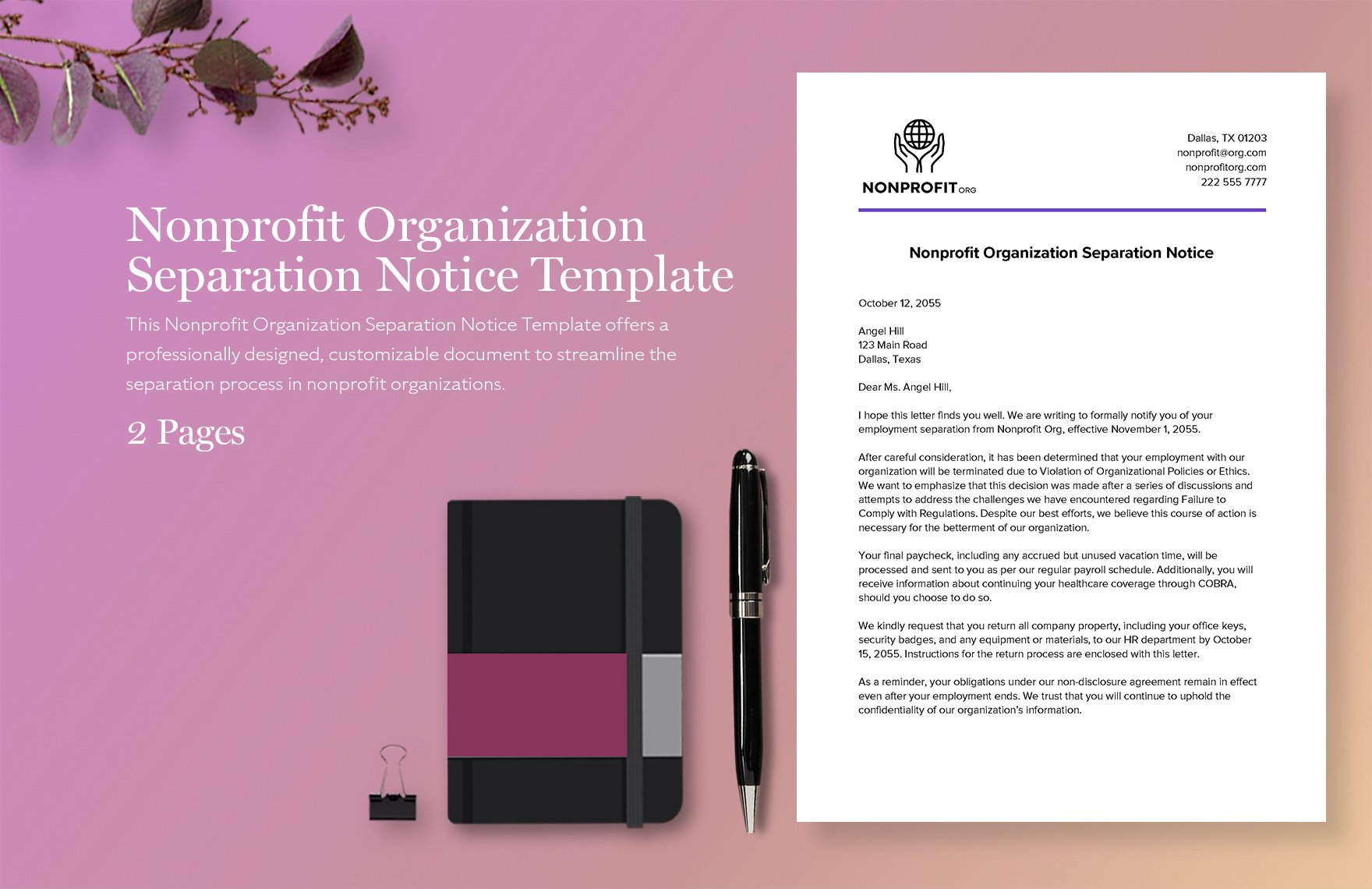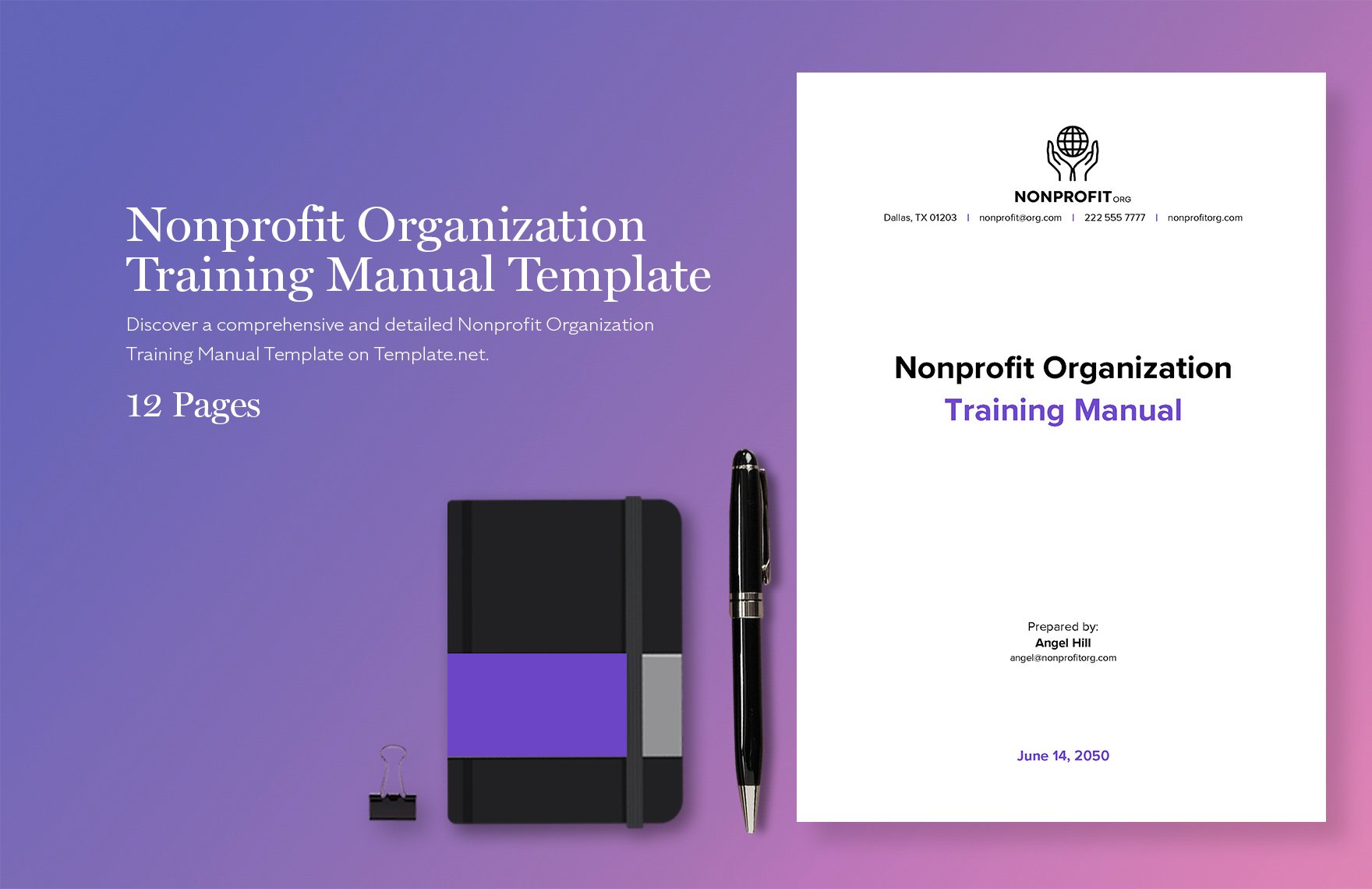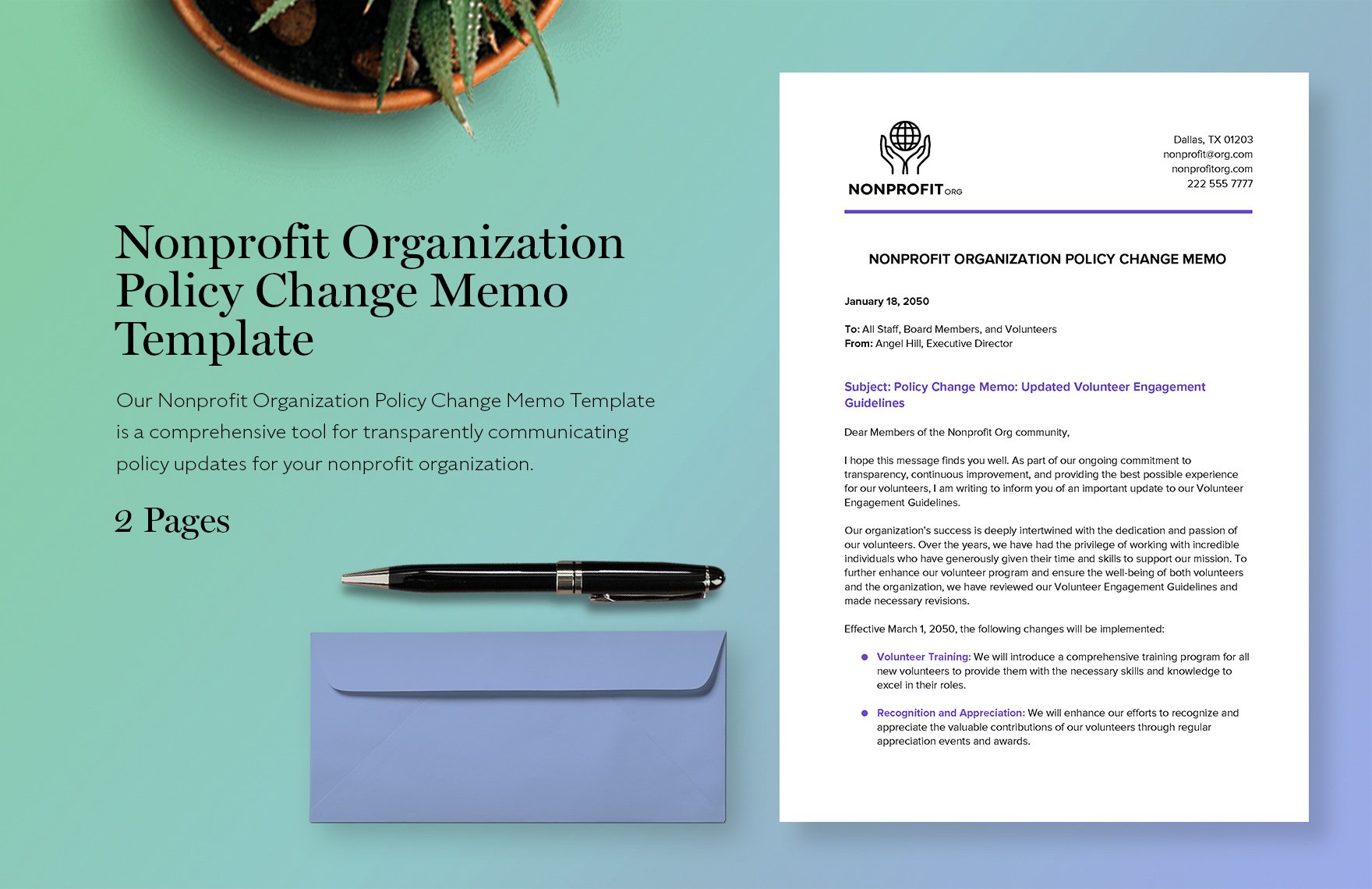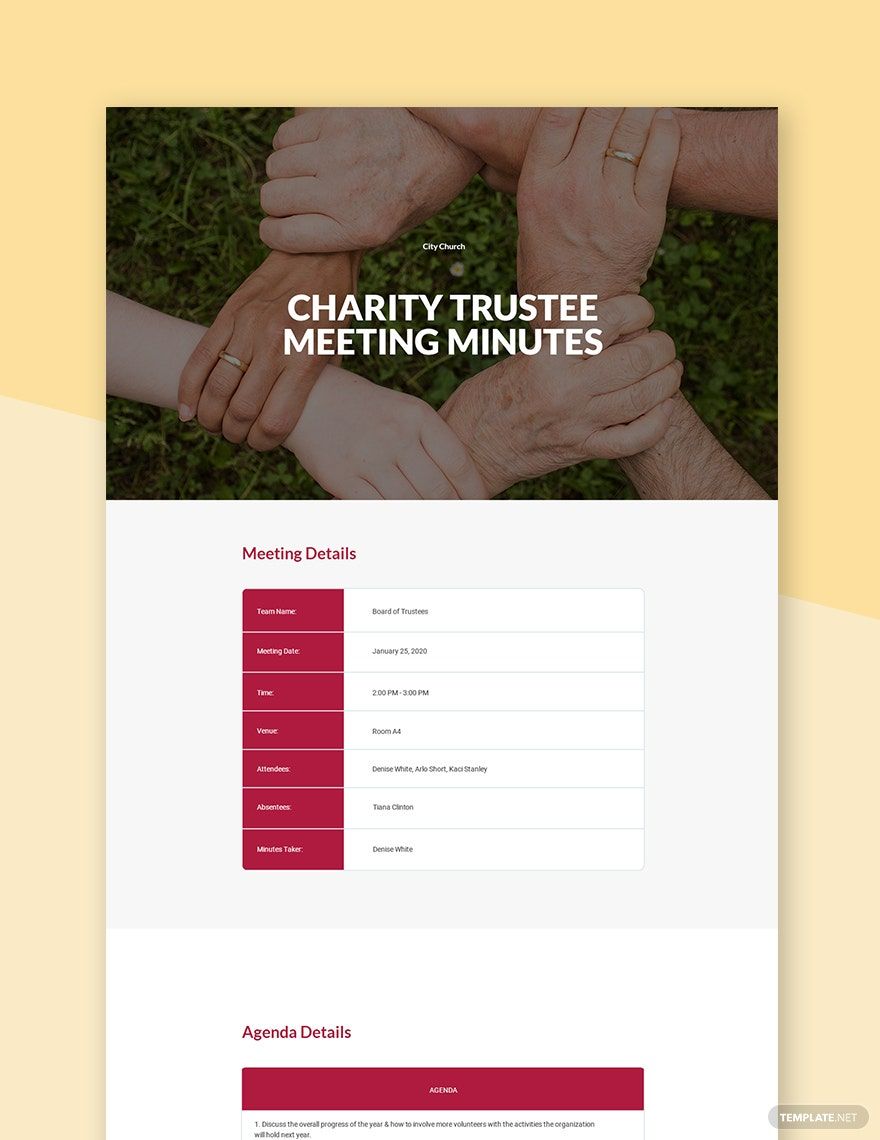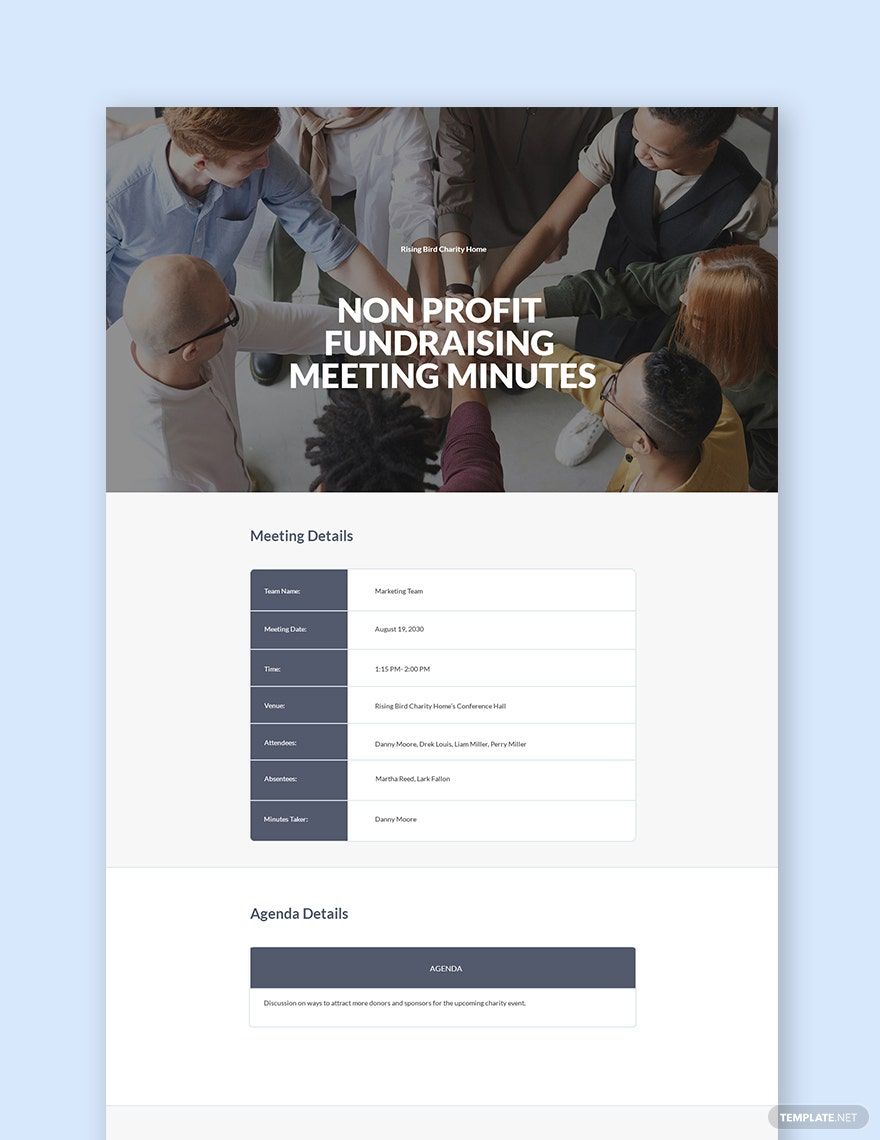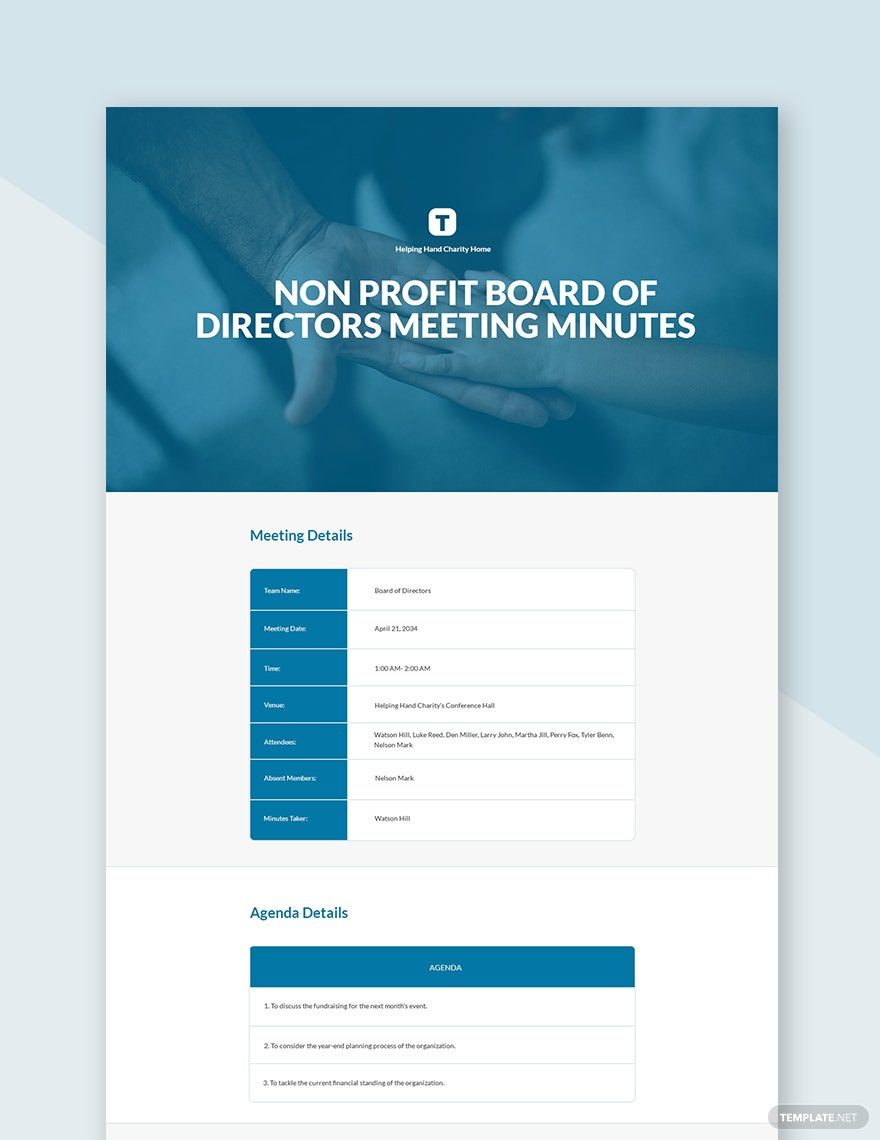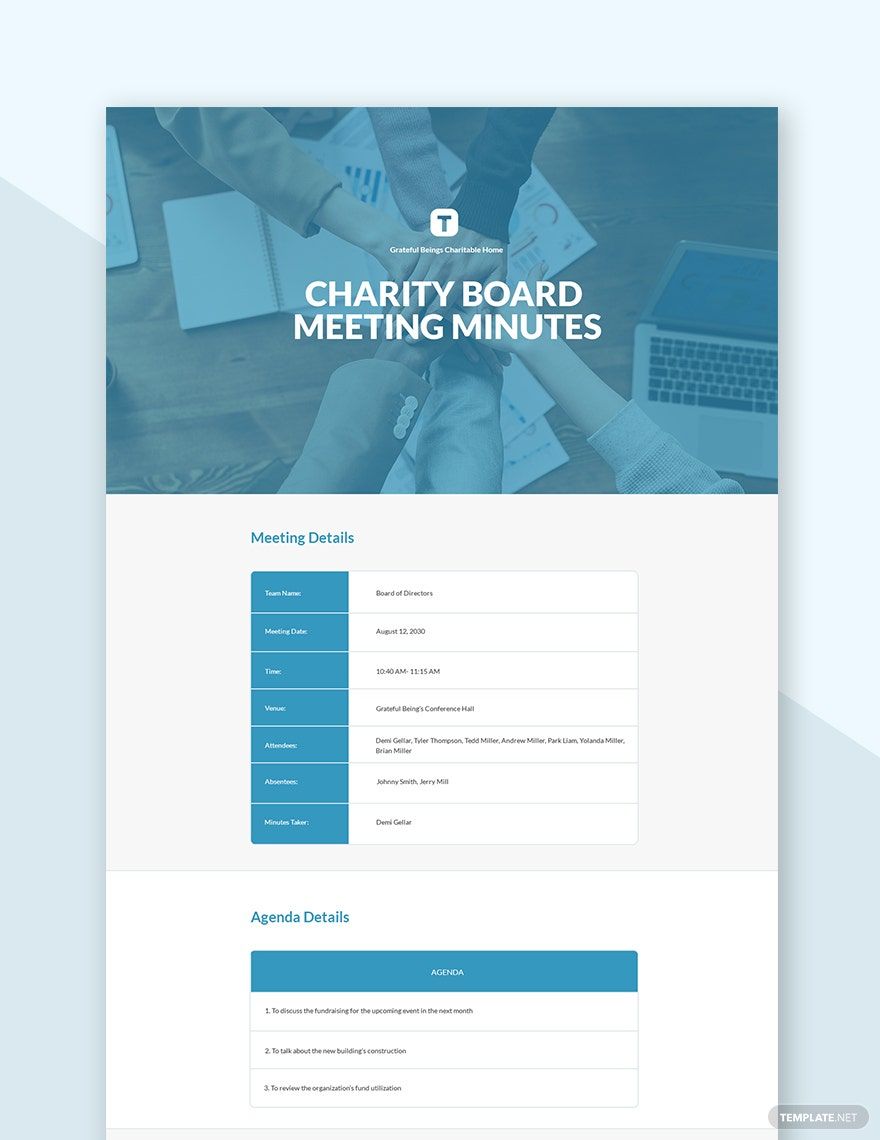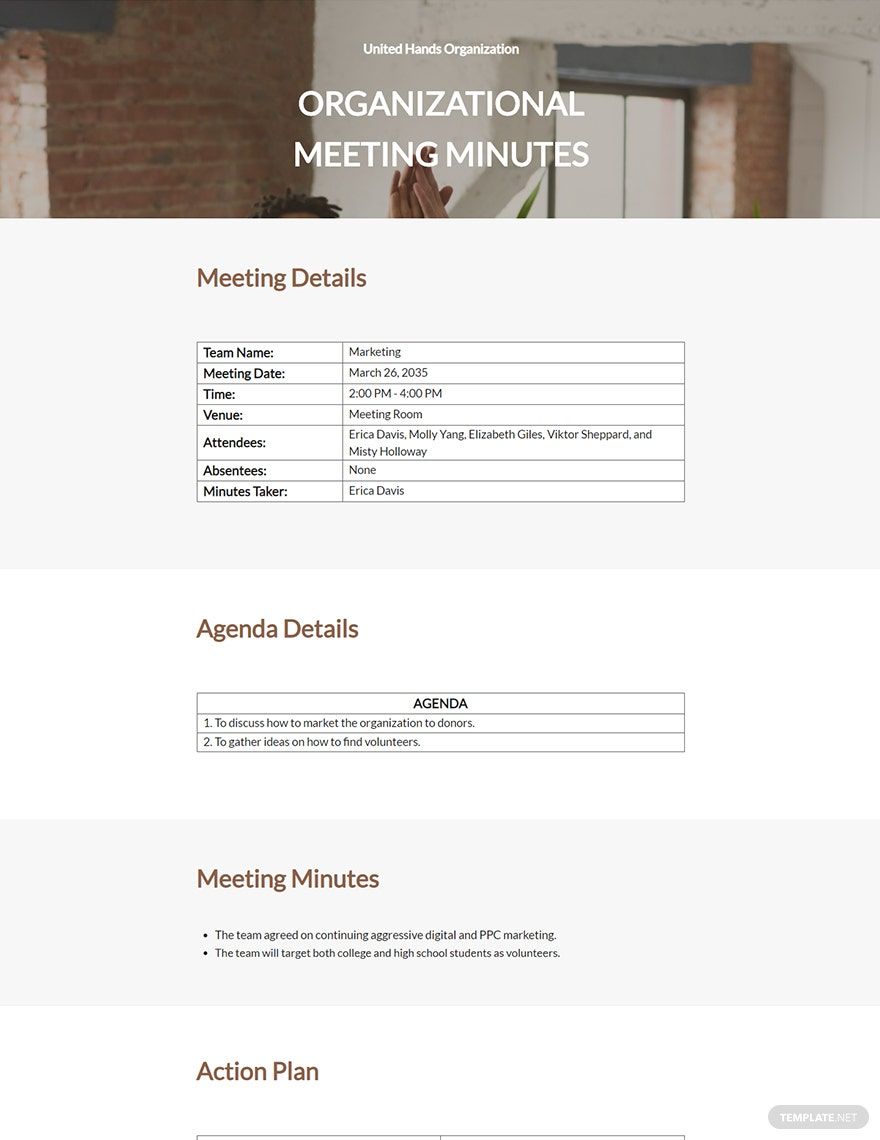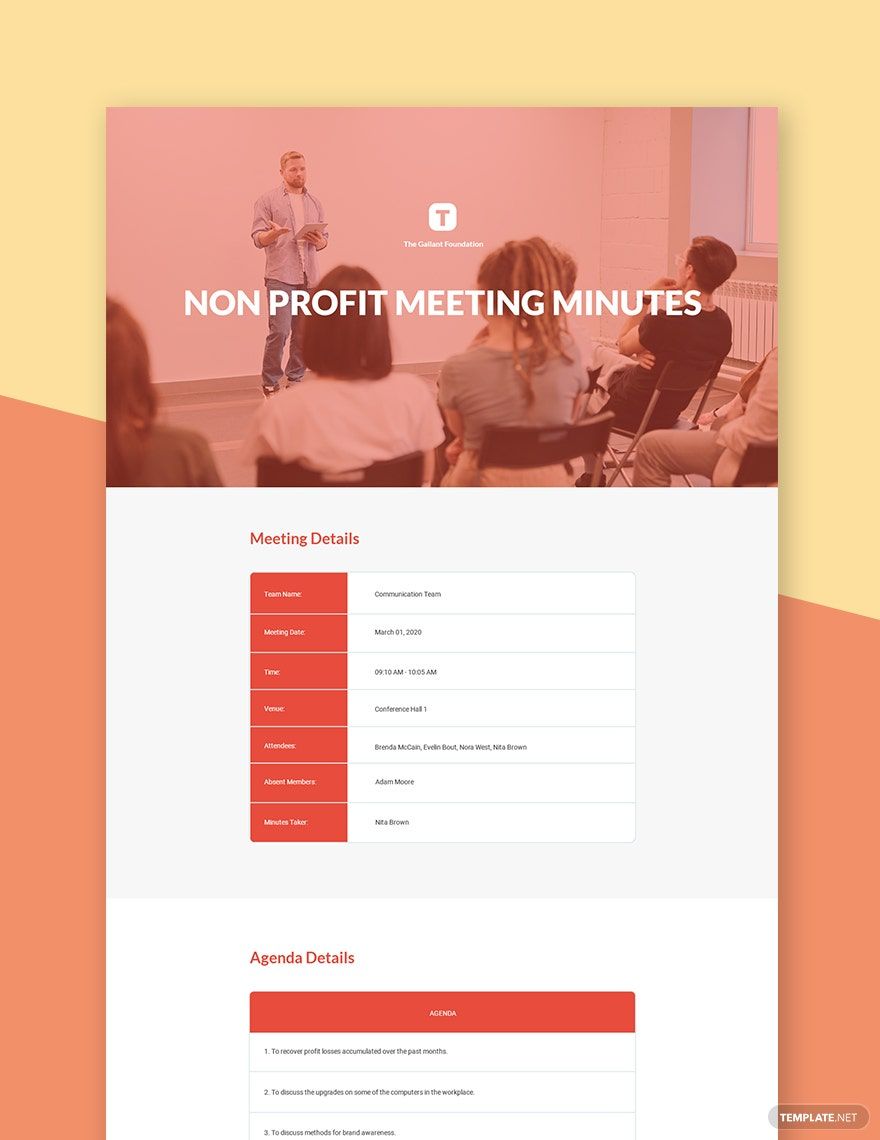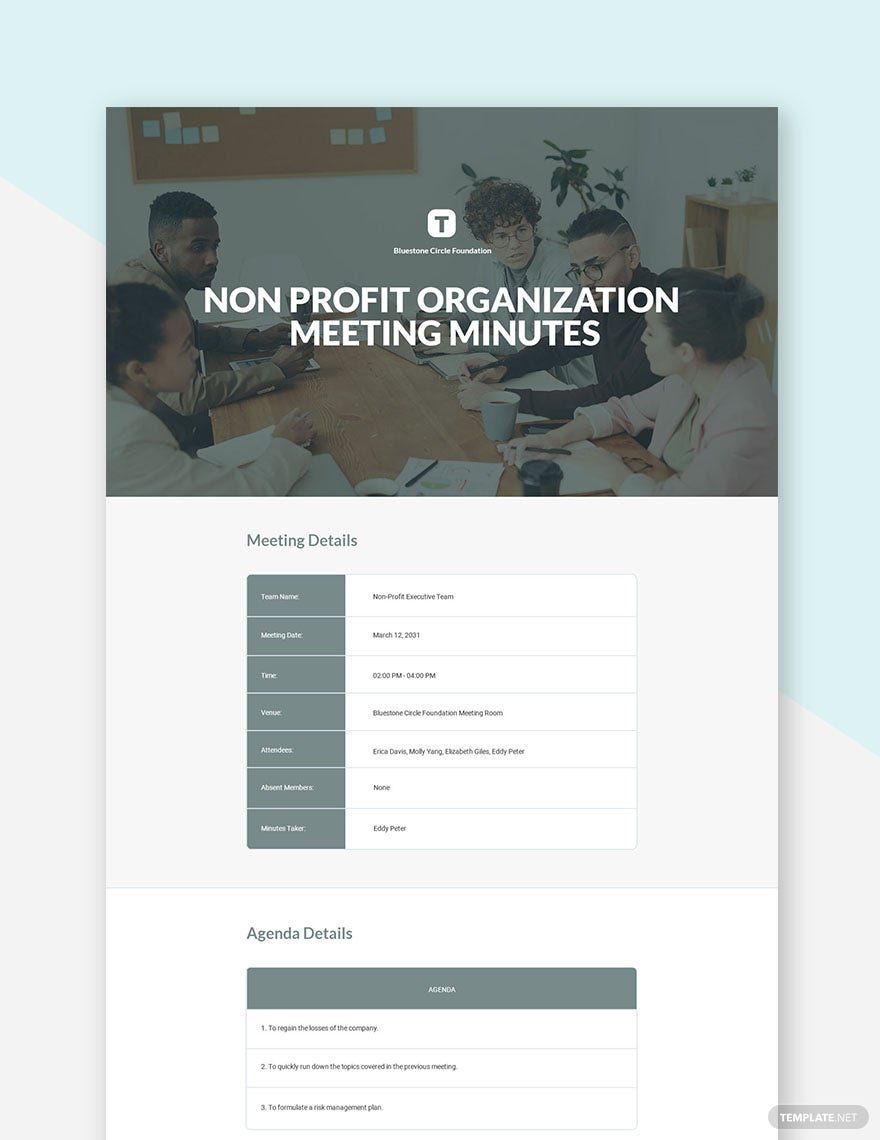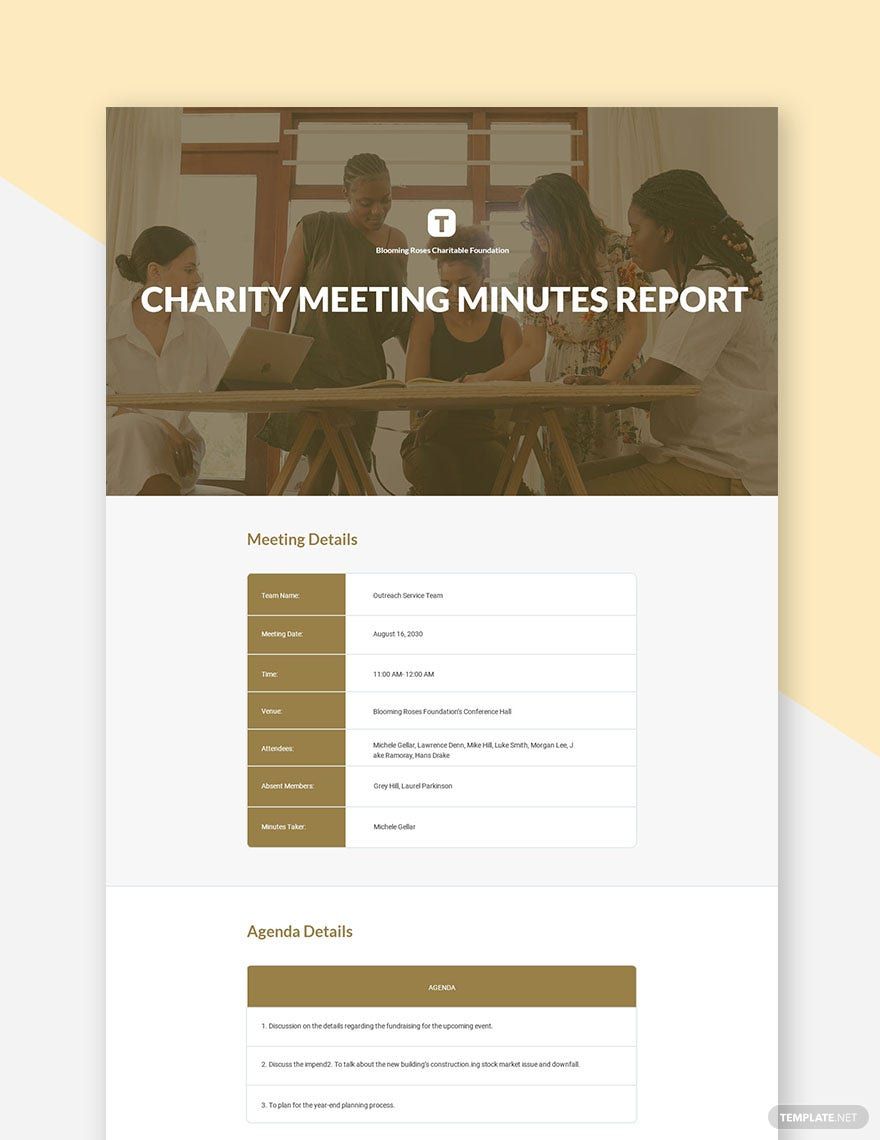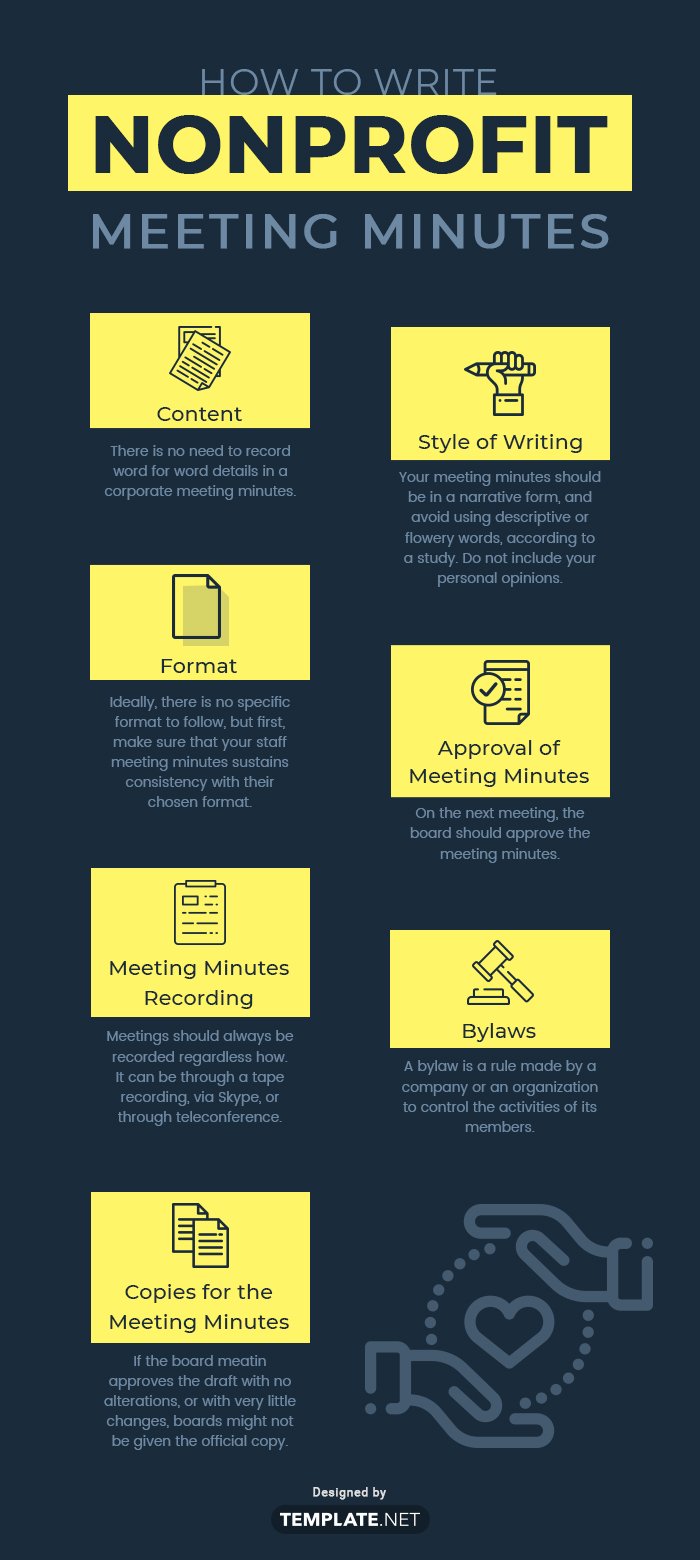A non-profit meeting minutes is simply the same as any meeting minutes like a corporate meeting minutes. This document is a school of records that details the events of a meeting. Meeting minutes can be long or short depending on the agenda or the subject or the desire of the meeting. Here are some guidelines in writing for meeting minutes:
1. Content
There is no need to record word for word details in a corporate meeting minutes. However, you have to include the basic details of the meeting. These include the date and time of the meeting, board member list or the list board of directors, whether a quorum is established, names of other guests in attendance, and whether the meeting is special or regular. For a recommendation, you can add alternatives contemplated for important decisions, insert votes against the motion, add the key points given by the board, and include the votes required by the law (did it reach majority?).
2. Style of Writing
Your meeting minutes should be in a narrative form, and avoid using descriptive or flowery words, according to a study. Do not include your personal opinions.
2. Format
Ideally, there is no specific format to follow, but first, make sure that your staff meeting minutes sustains consistency with their chosen format and has to be organizational. It has to be readable and comprehensible. Another thing, make sure that your format is orderly and consistent. Don't make it questionable by altering the format, for example, on the last meeting your format was very detailed, but on the next meeting it was not. It would become very questionable if that happened.
3. Approval of Meeting Minutes
On the next meeting, the board should approve the meeting minutes. The board should deliberately approve of the board meeting minutes in order to avoid errors on the record. Make the approval early so that the board cannot overlook the mistakes made.
4. Meeting Minutes Recording
Meetings should always be recorded regardless how. It can be through a tape recording, via Skype, or through teleconference. Without the recording, the meeting could end up that it never existed since there is no medium of record. Traditionally, corporate meeting minutes is recorded by the secretary, if the secretary is absent, another officer should take his or her place. Whoever took the meeting minutes, he or she should sign it to keep it legal.
5. Bylaws
A bylaw is a rule made by a company or an organization to control the activities of its members. Board members should be familiar with the bylaws. Their actions must reflect the bylaws made by the organization. Board members should know with the number of votes needed to establish a quorum.
6. Copies for the Meeting Minutes
If the board meatin approves the draft with no alterations, or with very little changes, boards might not be given the official copy. However, board members can ask for copies of the sample meeting minutes.

